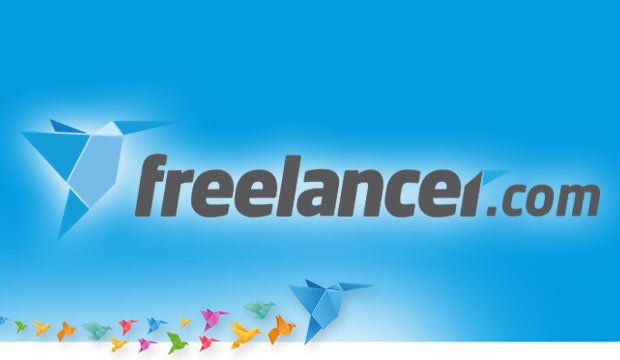Top 10 Freelancing Platforms for Beginners in 2025
Discover the best freelancing platforms for beginners in 2025. Compare top sites, features, and earning potential to kickstart your remote career.

The Freelancing Platforms for Beginners landscape has transformed dramatically, creating unprecedented opportunities for beginners seeking flexible work arrangements and location independence. As we navigate through 2025, the gig economy continues its explosive growth, with millions of professionals worldwide choosing freelance work over traditional employment. Whether you’re a student looking to earn extra income, a professional transitioning careers, or someone exploring remote work opportunities, selecting the right freelancing website can make or break your success journey.
For beginners in freelancing, the digital marketplace presents both exciting possibilities and overwhelming choices. The key to launching a successful freelance career lies in understanding which platforms align with your skills, experience level, and income goals. Unlike established freelancers who can afford to be selective, newcomers need platforms that offer accessible entry points, reasonable competition levels, and genuine opportunities to build portfolios and client relationships.
The best freelancing platforms for beginners share several crucial characteristics: user-friendly interfaces, transparent payment systems, strong dispute resolution mechanisms, and communities that support newcomers. These platforms have evolved beyond simple job boards, now offering integrated tools for project management, time tracking, skill development, and professional networking. Many provide educational resources, certification programs, and mentorship opportunities specifically designed to help new freelancers overcome initial challenges and establish credibility.
This comprehensive guide examines the top 10 freelancing platforms that cater specifically to beginners’ needs in 2025. We’ve analyzed platform features, fee structures, competition levels, payment reliability, and user experiences to identify marketplaces where newcomers can realistically land their first projects and build sustainable freelance businesses. From general marketplaces offering diverse opportunities across multiple industries to niche platforms specializing in specific skill sets, this article provides detailed insights into each platform’s strengths, limitations, and ideal user profiles. Understanding these differences empowers you to make informed decisions and invest your time and energy where you’re most likely to succeed in today’s competitive freelance marketplace.
Freelancing Platforms in 2025
Freelancing platforms serve as digital intermediaries connecting independent professionals with clients seeking specific services. These marketplaces have matured significantly, incorporating artificial intelligence, automated matching systems, and sophisticated verification processes. The modern freelance website ecosystem offers far more than basic job listings, providing comprehensive ecosystems that support every aspect of freelance work from discovery through payment processing.
The evolution of Freelancing Platforms for Beginners reflects broader shifts in how organizations approach talent acquisition. Companies increasingly prefer hiring specialized freelancers for project-based work rather than maintaining large permanent teams. This trend has created massive demand across industries, from software development and digital marketing to creative services and administrative support. For beginners, this means abundant opportunities exist, but competition remains fierce, particularly on popular platforms.
Understanding platform dynamics proves essential for newcomers. Each freelancing website operates with unique algorithms, fee structures, and community norms. Some platforms use bidding systems where freelancers compete on price, while others emphasize portfolios and client reviews. Certain marketplaces curate talent rigorously, accepting only highly qualified professionals, whereas others maintain open ecosystems welcoming beginners in freelancing. Payment models vary, too, including hourly rates, fixed-price projects, milestone-based payments, and subscription-based retainers.
Platform selection significantly impacts your freelance career trajectory. Choosing marketplaces aligned with your skill level prevents frustration and wasted effort. Beginners benefit most from platforms offering lower competition, accessible entry requirements, educational resources, and supportive communities. As you gain experience and build your reputation, you can graduate to premium platforms with higher earning potential but stricter qualification standards.
1. Upwork – The Comprehensive Marketplace for New Freelancers
Upwork stands as the world’s largest freelancing platform for Beginners, connecting millions of freelancers with clients across virtually every industry imaginable. For beginners, Upwork offers unparalleled diversity in project categories, from writing and graphic design to web development and virtual assistance. The platform’s sophisticated matching algorithm helps newcomers discover relevant opportunities, while its robust infrastructure ensures secure payments and professional dispute resolution.
The platform operates on a bidding system where freelancers submit proposals for posted jobs. New freelancers receive 60 “Connects” monthly to apply for projects, with each application typically requiring between one and six Connects depending on project complexity. While this system creates competition, it also ensures freelancers carefully consider which opportunities match their capabilities. Beginners can enhance visibility through Upwork’s skills tests, portfolio showcases, and profile optimization features.
Upwork’s fee structure uses a sliding scale: 20% commission on earnings up to $500 with each client, 10% for earnings between $500 and $10,000, and 5% thereafter. This model encourages long-term client relationships and rewards consistency. Payment protection mechanisms safeguard both parties, with escrow services for fixed-price projects and automated time tracking for hourly work. The platform supports multiple payment methods and offers relatively fast withdrawal options.
For beginners in freelancing, Upwork provides extensive learning resources through Upwork Academy, featuring courses on profile optimization, proposal writing, and client communication. The platform’s community forums connect newcomers with experienced freelancers willing to share insights and strategies. Starting on Upwork requires patience and strategic proposal writing, but the platform’s massive client base means opportunities exist across all skill levels and experience ranges.
2. Fiverr – Ideal for Service-Based Beginners
Fiverr revolutionized Freelancing Platforms for Beginners by flipping the traditional job search model. Instead of bidding on client-posted projects, freelancers create “gigs”—service packages starting at $5 that showcase their offerings. This seller-driven marketplace empowers new freelancers to define their services, pricing, and delivery timelines, attracting clients who browse gig listings rather than posting job requirements.
The platform excels for beginners because it eliminates competitive proposal writing. Success depends on creating compelling gig titles, descriptions, and portfolio samples that attract buyer attention. Fiverr’s search algorithm rewards quality content, positive reviews, and quick response times. Newcomers start as Level 0 sellers, advancing through seller levels (Level One, Level Two, Top Rated) as they complete orders successfully and maintain high ratings.
Fiverr’s commission structure charges 20% on all transactions, regardless of order value. While this percentage remains higher than some competitors, the platform compensates with massive traffic—millions of buyers actively search for services daily. Beginners can start with basic gigs priced at $5-$25, then expand offerings through gig extras and premium packages. Many successful Fiverr sellers eventually price services between $100-$500 per project after building a reputation.
The platform’s freelance marketplace works exceptionally well for creative services like logo design, video editing, voiceovers, and copywriting. Digital marketing services, including SEO, social media management, and content creation, also thrive on Fiverr. For beginners, the key lies in selecting niche services with reasonable competition, delivering exceptional quality to earn positive reviews, and gradually expanding service offerings as experience grows.
3. Freelancer.com – Competitive Opportunities for Newcomers

Freelancer.com operates as one of the oldest and largest freelancing platforms, hosting millions of projects across more than 1,800 categories. The platform employs a bidding model where freelancers compete for client-posted projects by submitting proposals with time estimates and pricing. For new freelancers, Freelancer.com offers advantages through its contest feature, where multiple freelancers submit work samples, with clients selecting winners—an excellent portfolio-building opportunity.
The platform’s membership structure includes free basic accounts with limited monthly bids and premium memberships (around $7-$60 monthly) offering unlimited bids, enhanced profile visibility, and additional features. Freelancing Platforms for Beginners can start with free accounts to test the waters before committing to paid subscriptions. The commission structure charges 10% or $5 minimum per project, whichever is greater, making it competitive for higher-value projects.
Freelancer.com distinguishes itself through diverse project types spanning web development, mobile app creation, data entry, translation, engineering, and scientific work. This breadth means opportunities exist regardless of your skill set. The platform’s exam system allows freelancers to demonstrate expertise through skill tests, enhancing credibility with potential clients. Verified profiles carrying badges signal trustworthiness to clients prioritizing reliability.
Success on Freelancer.com requires strategic bidding. Beginners should initially focus on smaller projects to build reviews and ratings. The platform’s milestone system protects both parties by releasing payments incrementally as project phases are complete. Time-tracking tools support hourly projects, while the messaging system facilitates clear client communication. Though competition can be intense, particularly for entry-level tasks, consistent quality delivery and professional communication help new freelancers establish strong reputations.
4. PeoplePerHour – European-Focused Freelancing Platform
PeoplePerHour positions itself as a premium Freelancing Platforms for Beginners with a particularly strong presence in the United Kingdom and European markets. The platform combines elements of bidding systems with seller-created offerings called “Hourlies”—fixed-price services freelancers design and promote. For beginners, this hybrid model provides flexibility to both pursue posted jobs and market predetermined services.
The platform’s fee structure charges 20% commission on first-time client transactions and reduces to 7.5% for repeat business—one of the most freelancer-friendly progressive commission models in the industry. This structure incentivizes building long-term client relationships. New freelancers benefit from transparent pricing and predictable fee calculations, essential for accurate income projections during early career stages.
PeoplePerHour particularly excels for creative professionals, digital marketers, developers, and business consultants. The platform’s quality standards emphasize professionalism, with verification processes ensuring legitimate clients and skilled freelancers. Beginners receive limited monthly proposals with free accounts, with options to purchase additional proposals or upgrade to premium memberships for unlimited proposals and enhanced visibility features.
The platform’s “WorkStream” feature enables efficient project management, file sharing, and time tracking within the platform ecosystem. Secure payment processing through escrow mechanisms protects both parties. For beginners in freelancing targeting European clients or seeking higher-value projects, PeoplePerHour offers less competition than mega-platforms while maintaining substantial opportunity volume. The emphasis on quality over quantity attracts clients willing to invest in skilled professionals.
5. Guru – Professional Networking Meets Freelancing
Guru differentiates itself among freelancing platforms through its emphasis on long-term professional relationships and repeat business. The platform caters to experienced professionals and ambitious beginners seeking substantial projects rather than quick gigs. Guru’s SafePay system provides robust payment protection, holding client funds in escrow until project milestones are completed satisfactorily.
The membership structure offers free basic access with limited features and three paid tiers (ranging approximately $10-$40 monthly), providing increasing numbers of bids, enhanced visibility, and premium features. Commission rates vary by membership level, ranging from 5% to 9%, significantly lower than many competitors. For new freelancers planning a serious commitment to freelancing, investing in membership pays dividends through reduced fees and improved opportunity access.
Guru attracts clients seeking ongoing relationships rather than one-off tasks. This focus benefits beginners willing to invest in building strong client connections. The platform particularly suits software developers, business consultants, engineers, designers, and financial professionals. Project values tend toward the higher end, with many assignments exceeding $1,000, making it worthwhile for freelancers who can deliver professional-grade work.
The platform’s workroom feature centralizes communication, file sharing, invoicing, and payments within a single interface. Detailed profile sections allow freelancers to showcase portfolios, certifications, education, and work history comprehensively. While competition exists, Guru’s professional atmosphere and quality-focused clientele create opportunities for new freelancers who present themselves professionally and deliver exceptional work consistently.
6. Toptal – Premium Platform for Ambitious Beginners
Toptal operates differently from typical freelancing platforms, functioning as an exclusive network connecting the top 3% of freelance talent with high-paying clients. While traditionally considered advanced, ambitious beginners with strong skills and impressive portfolios might pass Toptal’s rigorous screening process. The platform specializes in software development, design, finance, and project management.
The application process involves multiple stages: comprehensive screening of applications, timed skill assessments, live technical interviews, and test projects. Only highly qualified candidates gain acceptance. However, once accepted, freelancers access premium projects with rates typically 2-3 times higher than general platforms. Toptal charges no commission to freelancers—clients pay platform fees, meaning approved freelancers keep 100% of their quoted rates.
For new freelancers with demonstrable expertise—perhaps recent graduates from top universities, bootcamp standouts, or professionals transitioning from corporate roles—Toptal offers accelerated career paths. The platform handles client acquisition, vetting, and matching, allowing freelancers to focus purely on delivery. Projects tend toward longer engagements, often full-time contracts lasting months.
While most absolute beginners in freelancing shouldn’t attempt Toptal initially, those with strong portfolios and advanced skills should consider applying. Rejection doesn’t preclude future applications after gaining more experience. The platform represents an aspirational target, motivating freelancers to develop skills reaching top-tier standards. For those who succeed, Toptal provides premium income potential and prestigious clients that accelerate professional growth.
7. 99designs – Specialized Creative Platform

99designs operates as a niche Freelancing platform for Beginners exclusively for designers—graphic designers, logo creators, web designers, and other visual creatives. The platform’s contest-based model allows clients to launch design competitions where multiple designers submit concepts, with clients selecting winners who receive payment. For new freelancers in design, this creates portfolio-building opportunities even when not winning contests.
The platform also supports one-to-one projects where clients hire designers directly based on portfolios and reviews. Beginners typically start with contests to build portfolios and gather reviews before transitioning toward direct hiring arrangements. Contest prizes range from $300 to several thousand dollars, depending on project complexity and client budgets. Designers retain rights to unselected submissions, allowing portfolio usage.
99designs charges designers platform fees on contest winnings (ranging from free to paid membership tiers, affecting commission rates from 5-15%) and direct project commissions. Higher-tier memberships provide additional contest visibility, enhanced portfolio features, and reduced fees. The platform’s quality standards maintain professional expectations, filtering out low-quality submissions and protecting brand reputation.
For Freelancing Platforms for Beginners with design capabilities, 99designs offers structured paths for skill development and reputation building. The community features tutorials, webinars, and forums where experienced designers share insights. Unlike general platforms where designers compete against all freelance categories, 99designs’ specialization creates focused opportunities. Success requires strong design fundamentals, creativity, attention to client briefs, and persistence through initial contests before establishing winning patterns.
8. SimplyHired – Traditional Job Board Meets Freelance Opportunities
SimplyHired functions primarily as a job aggregator but increasingly features substantial freelance work listings alongside traditional employment opportunities. For beginners, SimplyHired offers a familiar interface resembling conventional job boards, reducing learning curves associated with specialized freelancing platforms. The site aggregates listings from multiple sources, providing comprehensive access to opportunities across diverse industries.
The platform charges no fees to job seekers or freelancers, generating revenue through employer advertising and premium job posting options. This cost-free access benefits new freelancers, testing whether freelancing suits their circumstances before investing in platform memberships elsewhere. Search filters enable targeting remote positions, contract work, part-time arrangements, and full-time freelance roles.
SimplyHired particularly benefits freelancers seeking longer-term contract positions rather than quick gigs. Many listings involve 3-12 month contracts with companies preferring contractors over employees. Industries well-represented include administrative support, customer service, accounting, writing, and technical roles. The platform’s salary estimation tools help Freelancing Platforms for Beginners understand market rates for various positions and experience levels.
While SimplyHired lacks the project management tools, payment protection, and community features of dedicated freelancing websites, it compensates through sheer listing volume and diversity. Freelancers apply directly to clients through the provided contact methods or linked company websites. This direct approach suits professionals comfortable with independent client communication and contract negotiation. The platform works effectively as one component of a diversified freelance opportunity search strategy.
9. FlexJobs – Vetted Remote and Freelance Opportunities
FlexJobs distinguishes itself among freelancing platforms through rigorous job vetting that eliminates scams, pyramid schemes, and low-quality opportunities. For beginners in freelancing concerned about legitimacy and safety, FlexJobs provides peace of mind through its screening process. The platform specializes in remote work, flexible schedules, and freelance contracts across professional industries.
Unlike free platforms, FlexJobs operates on a subscription model, charging approximately $25-$50, depending on subscription length (ranging from one month to one year). This membership fee funds the manual vetting process, ensuring listing quality. For new freelancers willing to invest modestly in their job search, this cost proves worthwhile through time saved avoiding scams and low-quality opportunities prevalent on free platforms.
FlexJobs particularly suits professionals from career fields like marketing, human resources, accounting, writing, project management, and consulting. Listings tend toward higher professionalism levels with established companies rather than individual clients. Many opportunities involve ongoing part-time or full-time freelance arrangements rather than quick one-off projects. This focus benefits beginners seeking stability and consistent income during freelance career establishment phases.
The platform provides career coaching resources, skills testing, resume reviews, and expert articles supporting professional development. Search capabilities include advanced filters for schedule flexibility, location preferences, career level, and employment type. While FlexJobs requires upfront investment and may not suit freelancers seeking quick gig-based income, it excels for professionals transitioning from traditional employment to legitimate remote work and freelance arrangements with reputable organizations.
10. LinkedIn – Professional Networking Platform with Freelance Potential
LinkedIn transcends traditional freelancing platforms, functioning primarily as a professional networking site with increasingly robust features supporting freelance work. The platform’s massive user base, exceeding 900 million professionals, creates unparalleled networking opportunities. For beginners, LinkedIn offers unique advantages: building professional brands, connecting with potential clients, and discovering opportunities through both direct outreach and job postings.
LinkedIn’s “Open to Work” feature signals availability to recruiters and potential clients. Freelancers can specify contract work preferences, target industries, and desired roles. The platform’s Creator mode emphasizes content creation, allowing freelancers to demonstrate expertise through articles, posts, and shared insights. Consistent, valuable content attracts visibility and establishes thought leadership, potentially leading to inbound client inquiries.
LinkedIn charges no fees for basic networking and opportunity exploration. Premium subscriptions (ranging approximately $30-$100 monthly) provide enhanced search capabilities, InMail messaging to connect with prospects outside your network, and visibility into who viewed your profile. For new freelancers building client bases, premium features accelerate networking efficiency, though success remains possible with free accounts through strategic engagement.
The platform’s effectiveness for freelancing depends heavily on proactive networking. Unlike traditional freelancing websites where clients post jobs, LinkedIn requires relationship building, direct outreach, and personal branding. Freelancers succeed by engaging authentically with connections, joining relevant industry groups, participating in discussions, and strategically connecting with potential clients. While requiring more initiative than passive job board browsing, LinkedIn’s approach develops sustainable client relationships and recurring business opportunities crucial for long-term freelance career success.
Key Factors When Choosing Freelancing Platforms
Selecting appropriate freelancing platforms requires evaluating multiple factors beyond surface-level features. Beginners in freelancing should consider these critical elements when determining where to invest time and energy. Understanding your priorities helps focus efforts on platforms aligning with personal circumstances, skills, and career objectives.
Platform Specialization vs. Generalization: Determine whether niche platforms focusing on your specific skills (like 99designs for designers) or general marketplaces (like Upwork) better serve your needs. Specialized platforms often feature less competition within their niches but limit opportunity diversity. General platforms provide abundant opportunities across categories but include intense competition.
Fee Structures and Payment Terms: Commission percentages significantly impact take-home earnings. Platforms charging 5-10% preserve more income than those taking 20%. However, higher-fee platforms might provide superior features, larger client bases, or better support, justifying costs. Also, examine payment processing times, minimum withdrawal thresholds, and available payment methods matching your preferences.
Competition Levels and Entry Barriers: Research typical competition levels within your skill category on each platform. Some platforms accept all applicants while others require applications, tests, or portfolio reviews. New freelancers with limited portfolios might initially favor open platforms before attempting exclusive networks. However, passing selective platform screenings immediately boosts credibility.
Client Quality and Project Values: Platform reputations attract different client types. Premium platforms attract established businesses with substantial budgets, while bargain-focused platforms draw price-sensitive clients. Consider whether you prefer competing for numerous small projects or investing efin fort pursuing fewer high-value opportunities. Project values directly impact income potential and client relationship quality.
Platform Support and Resources: Evaluate available learning resources, dispute resolution processes, payment protection mechanisms, and customer support quality. Beginners particularly benefit from platforms offering educational content, active communities, and responsive support teams. Strong infrastructure protects against common freelancing pitfalls during vulnerable early career stages.
Building Your Profile for Maximum Impact
Your Freelancing Platforms for Beginners profile serves as your digital storefront, making powerful first impressions on potential clients. New freelancers must optimize profiles strategically to compete effectively despite limited experience. Professional, comprehensive profiles significantly increase interview invitations and project awards across all freelancing websites.
Professional Photography: Invest in high-quality headshots projecting professionalism and approachability. Casual selfies undermine credibility. Your profile picture appears in search results and proposals, influencing whether clients engage further. Dress professionally, ensure good lighting, and smile naturally. This single element dramatically impacts perceived trustworthiness and professionalism.
Compelling Headlines and Summaries: Craft attention-grabbing headlines that immediately communicate your value proposition. Avoid generic titles like “Freelance Writer”—instead, try “Conversion-Focused Copywriter Specializing in SaaS Content.” Your summary should highlight key skills, experiences, and the specific problems you solve for clients. Use first person and conversational tone while maintaining professionalism.
Portfolio Showcases: Curate 5-10 strong work samples demonstrating capabilities relevant to target clients. Quality vastly outweighs quantity. Beginners without client work can create spec projects, volunteer work samples, or personal projects showcasing skills. Provide context for each portfolio piece, explaining objectives, your approach, and results achieved. Visual appeal matters—present work professionally.
Skills and Keywords: Research common keywords clients use when searching for services you offer. Incorporate these naturally throughout your profile, skills sections, and service descriptions. Many platforms use algorithmic matching between job posts and freelancer profiles. Strategic keyword inclusion improves discoverability without appearing spammy. Update regularly as you expand capabilities.
Social Proof and Credentials: Display relevant certifications, completed courses, degrees, and professional memberships. Even without client reviews initially, credentials establish baseline credibility. Link to external portfolios, professional websites, or social media profiles (particularly LinkedIn) when permitted. Request testimonials from colleagues, supervisors, or professors if lacking client feedback initially.
Strategies for Landing Your First Projects
Securing initial projects presents the greatest challenge for beginners in freelancing. Without established reputations, reviews, or portfolios, newcomers compete against experienced professionals. However, strategic approaches significantly improve success rates across Freelancing Platforms for Beginners. These proven tactics help overcome the cold-start problem facing all new freelancers.
Start with Competitive Pricing: Initially, price services below market rates to compensate for inexperience. Once you accumulate positive reviews and portfolio pieces, gradually increase rates. This strategy isn’t sustainable long-term, but it helps overcome initial barriers. Clearly communicate your beginner status and eagerness to prove capabilities, positioning lower rates as an investment in building your reputation.
Target Smaller, Simpler Projects: Resist the temptation to pursue large, complex projects initially. Instead, focus on quick, straightforward tasks you can complete excellently. Smaller projects accumulate reviews faster, build confidence, and create portfolio diversity. Success with simple projects establishes a track record, enabling the pursuit of larger opportunities subsequently.
Personalize Every Proposal: Generic, template-based proposals rarely succeed. Thoroughly read job descriptions, research clients, and craft tailored responses addressing specific needs. Reference details from postings demonstrating careful attention. Explain precisely how you’ll approach their project. Personalization signals professionalism and genuine interest, distinguishing you from copy-paste competitors.
Leverage Free Work Strategically: Consider offering free or heavily discounted work for 1-2 high-value clients in exchange for comprehensive testimonials, case studies, and portfolio permissions. Select clients whose brands, industries, or project types align with your target market. This strategic investment quickly establishes credibility. However, limit-free work strictly—avoid becoming a perpetual volunteer.
Optimize Response Times: Quick proposal submission and rapid client communication signal professionalism and dedication. Many platforms reward fast responders with higher visibility. Enable notifications and respond promptly to messages. While maintaining quality, speed demonstrates commitment and availability, valuable traits for clients managing projects.
Guarantee Satisfaction: Offer strong guarantees like unlimited revisions until satisfaction or money-back assurances for initial projects. Such guarantees reduce perceived risk for clients considering inexperienced freelancers. Most clients never abuse guarantees, but offering them builds confidence in your commitment to quality and client satisfaction.
Common Mistakes Beginners Should Avoid
New freelancers frequently encounter preventable setbacks stemming from common mistakes. Understanding these pitfalls helps navigate early freelance career stages more smoothly. Learning from others’ experiences rather than repeating errors accelerates success timelines and preserves motivation during challenging initial periods.
Underbidding Excessively: While competitive pricing helps beginners, drastically undercutting market rates damages the entire freelance ecosystem and establishes unsustainable precedents. Clients attracted solely by rock-bottom prices often prove problematic. Price services fairly, slightly below market initially, but never so low that profitability becomes impossible.
Accepting Problematic Clients: Desperation for initial projects tempts accepting clearly problematic clients exhibiting red flags—unrealistic demands, disrespectful communication, or unwillingness to pay fair rates. Declining bad-fit opportunities preserves time and energy for legitimate clients. One demanding, low-paying client can prevent pursuing multiple quality opportunities.
Neglecting Contracts and Agreements: Never begin work without clear written agreements detailing scope, deliverables, timelines, payment terms, and revision policies. Platform-provided contracts offer some protection, but supplemental agreements clarify expectations, reducing disputes. Casual, verbal agreements inevitably lead to misunderstandings. Professional contracts demonstrate seriousness.
Over-Promising and Under-Delivering: Eagerness to please clients sometimes leads beginners to promise unrealistic deadlines or capabilities beyond current skill levels. Such over-commitment damages reputations through missed deadlines or subpar work. Be honest about timelines and capabilities. Clients appreciate realistic expectations over broken promises.
Ignoring Communication Best Practices: Professional communication separates successful freelancers from struggling ones. Respond promptly, use proper grammar and spelling, maintain a friendly yet professional tone, and proactively update clients on progress. Poor communication creates client anxiety and damages relationships regardless of work quality.
Spreading Too Thin Across Platforms: While diversification has merit, actively maintaining profiles on too many platforms simultaneously dilutes focus and energy. Beginners should concentrate on 2-3 platforms initially, building strong reputations before expanding elsewhere. Excellence on a few platforms outperforms mediocrity across many.
Maximizing Earnings as You Gain Experience

As new freelancers accumulate positive reviews, portfolio pieces, and client relationships, strategic adjustments maximize income potential. Transitioning from survival mode to thriving requires intentional decisions about specialization, pricing, client selection, and platform utilization. These strategies help established beginners increase earnings sustainably.
Progressive Rate Increases: Regularly assess and increase rates as experience grows. Many freelancers maintain initial pricing for too long out of fear of losing clients. Confident, gradual rate increases (10-20% every 3-6 months initially) reflect growing expertise. Quality clients understand value and accept reasonable increases, while perpetual bargain-hunters are never ideal clients.
Specialization and Niching: Generalists compete on price while specialists command premium rates. Identify lucrative, enjoyable niches within your field, and develop specialized expertise. Specialists become go-to experts for specific problems, reducing competition and justifying higher rates. Research market demand before specializing to ensure viable client bases exist.
Transitioning to Retainer Relationships: One-off projects require constant client acquisition. Instead, cultivate ongoing retainer arrangements providing recurring monthly income for regular deliverables. Retainers stabilize income, deepen client relationships, and reduce business development time. Propose retainers to satisfied clients after successful project completion.
Selective Project Acceptance: As demand grows, become increasingly selective about accepted projects. Prioritize well-paying, interesting work from respectful clients. Declining mediocre opportunities create capacity for excellent ones. This selectivity improves average project quality, increases satisfaction, and raises overall income.
Multiple Revenue Streams: Successful freelancers diversify income beyond direct client work. Consider creating digital products, offering courses, writing books, affiliate marketing, or passive income streams leveraging your expertise. Diversification provides financial security and reduces dependence on active client work hours.
Skill Expansion: Continuously develop complementary skills, expanding service offerings. Writers might add SEO expertise, designers could learn user experience principles, and developers might master additional frameworks. Broader skill sets enable comprehensive solutions commanding premium pricing and attracting sophisticated clients.
Conclusion
The Freelancing Platforms for Beginners ecosystem in 2025 offers unprecedented opportunities for beginners willing to strategically navigate this dynamic landscape. Success requires carefully selecting platforms that align with your skills, experience level, and career goals while understanding each marketplace’s unique characteristics. From comprehensive platforms like Upwork and Fiverr offering diverse opportunities across industries, to specialized marketplaces like 99designs and premium networks like Toptal, options exist for every skill set and ambition level.
The key lies in starting with beginner-friendly platforms, consistently delivering exceptional work, building strong reputations through positive reviews, and strategically transitioning toward higher-paying opportunities as experience grows. By avoiding common pitfalls, optimizing profiles, personalizing proposals, and maintaining professional communication, new freelancers can successfully launch sustainable freelance careers.
Remember that building a thriving freelance business takes time, persistence, and continuous learning. The platforms discussed in this guide provide the infrastructure and opportunities—your dedication, skills, and professionalism determine outcomes. Start with one or two platforms, commit to excellence, embrace the learning process, and gradually expand your presence across the freelancing marketplace as you gain confidence and expertise.





